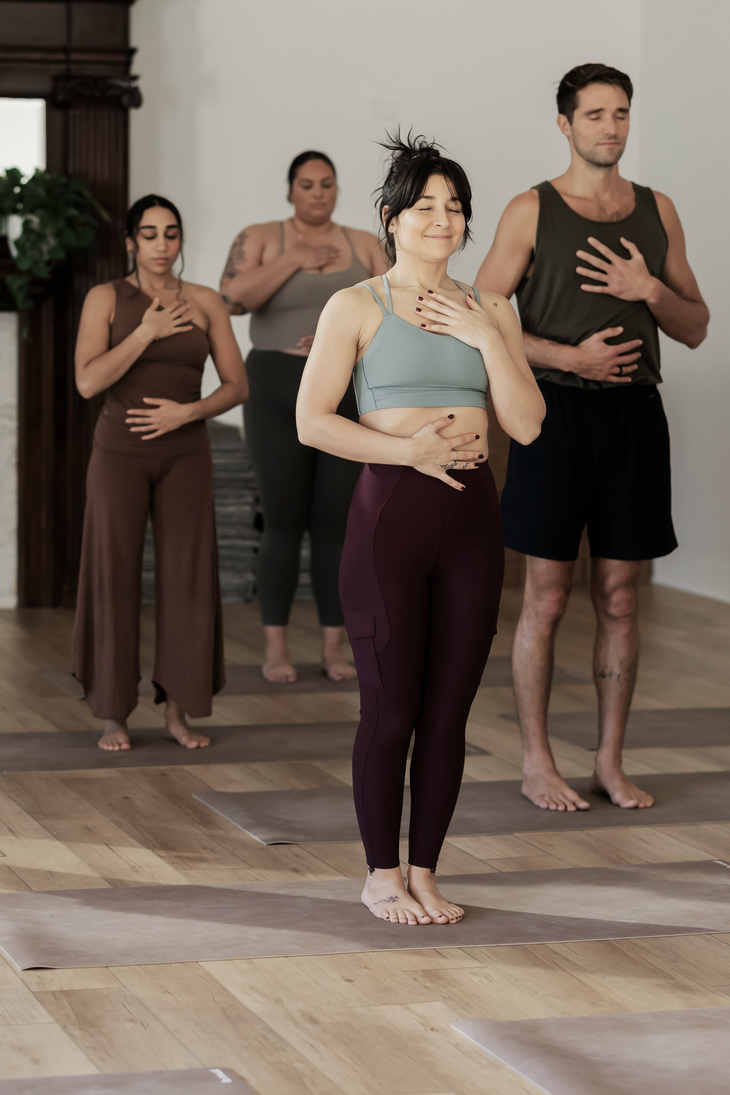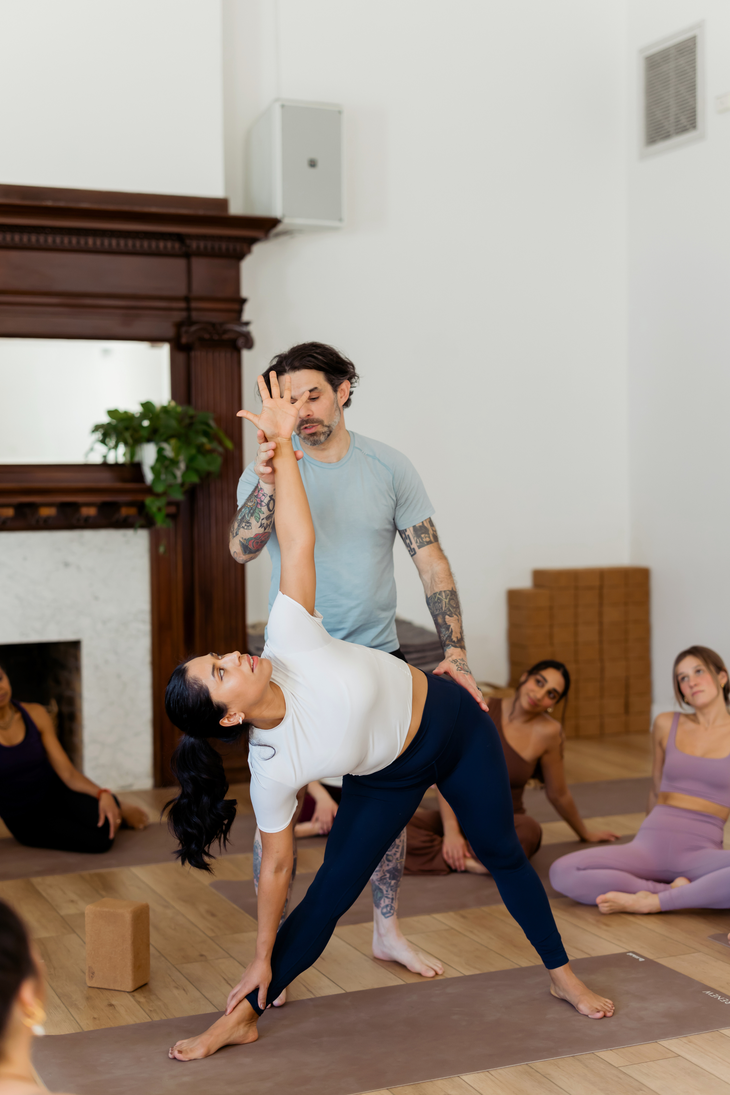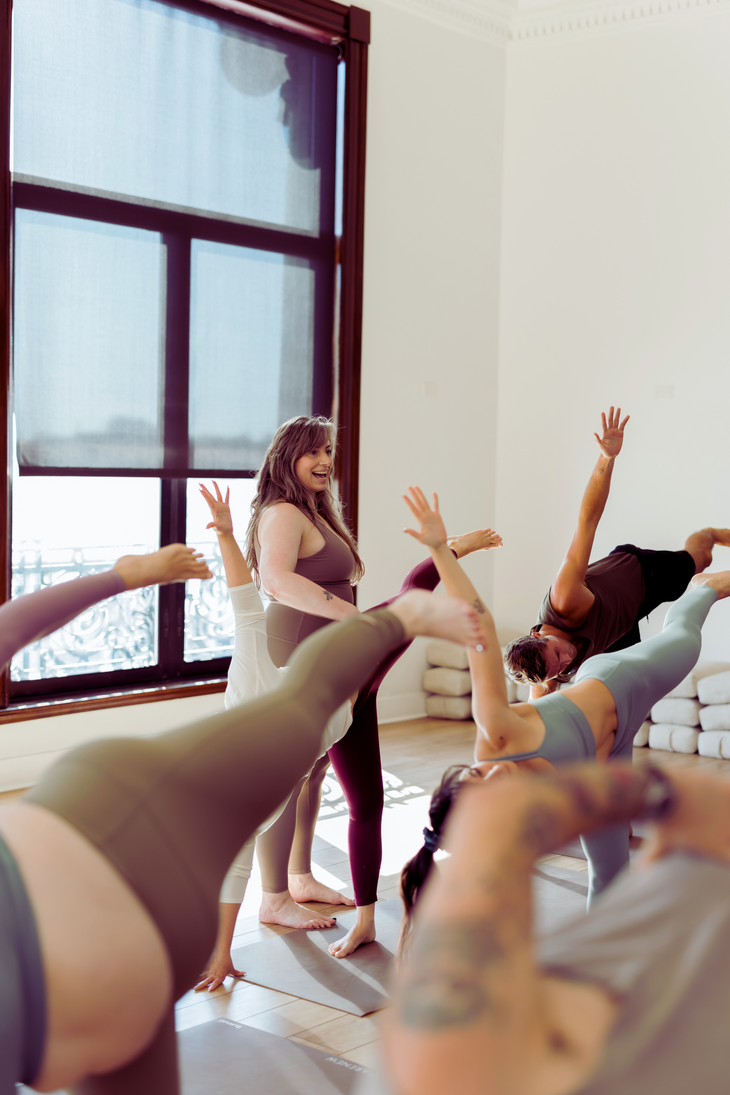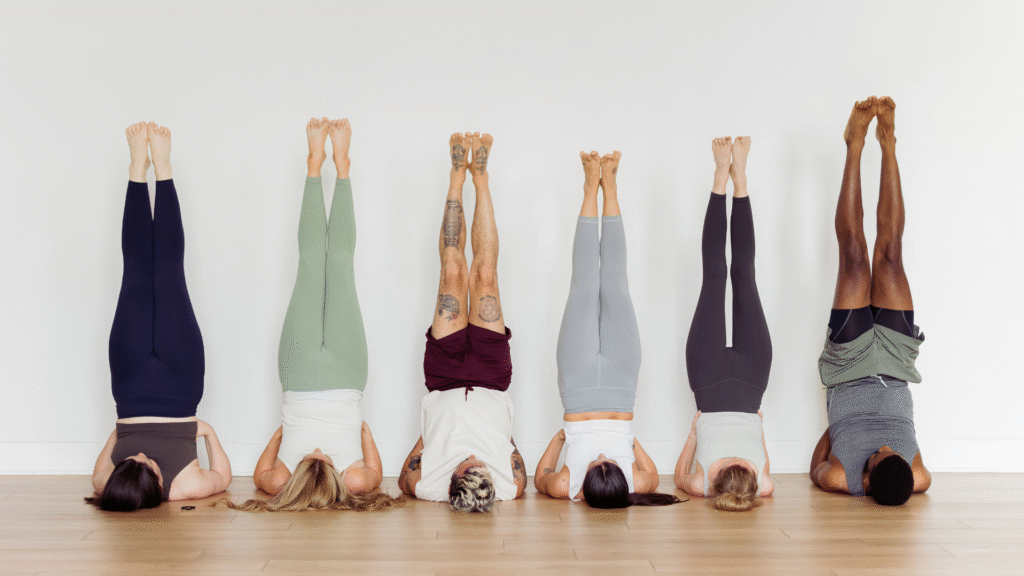In literally any yoga pose that is an inversion.
(Photo: YogaRenew)
Updated August 25, 2025 02:58PM
Want to know a weird but true thing about inversions in yoga? Sometimes the difference between feeling heavy and struggling against gravity versus feeling lifted and liberated comes down to your toes.
Yep. Your toes.
After nearly two decades of teaching and practicing inversions—such as Handstand, Forearm Stand, Headstand, and Shoulderstand, I’ve learned that one seemingly insignificant detail creates a dynamic, upward-moving energy that completes the pose and brings everything together.
And that’s spreading your toes.
I know that might sound ridiculous. You’re upside down, pressing through your hands, straightening your arms, somewhat desperately trying to maintain your focus, and somehow your toes are what’s keeping you from nailing your balance?
It might not be the first action you focus on while handstanding, nor should it be. But it’s the one that might revolutionize the way you progress in your inversion practice.
Why Spreading Your Toes Matters (Even When They’re in the Air)
If you’ve ever felt stuck in your inversions—like you’re working so hard and not getting anywhere—look to the places where you’ve stopped paying attention. Often, it’s the feet. They may feel too far away to matter, but they do. The toes are your finishing touch. The thing that makes your pose feel more like flight and less like a struggle.
Let’s talk about how this works.
You probably think of spreading the toes as something you do in standing poses to provide steadiness. Think Mountain Pose (Tadasana) or Triangle Pose (Trikonasana). When you move on to more complex poses that take you upside down, the concept understandably slips from memory as you focus on your hands.
But the simple action of spreading the toes still makes a difference, no matter what your orientation to gravity. In fact, it’s what helps you lift away from the ground.
Here’s what happens anatomically when you spread your toes:
- When you reach through the heel, you activate the back of the leg—especially the hamstrings and calf—and connect that line of effort into your deep core stabilizer muscles. That connection draws the pelvis into a steadier, more balanced position.
- When you press through the ball of the foot, you engage the quadriceps and hip flexors, lengthening the front of the leg and lifting up through the thigh.
- When you spread your toes, you wake up the small intrinsic muscles of the foot, you complete the energetic line of the pose. You extend the shape beyond the foot, creating a sense of reach and expansion that travels out into space.
For example, in a Handstand, this action makes your body feel longer. Lighter. More precise. Like you’re actually being pulled upward instead of just holding on and hoping.
Without it? The feet get floppy. The legs get heavy. And your energy starts leaking out the bottom of the pose, dragging your body back toward the earth along with it.
How to Practice Spreading Your Toes
It’s not quite as simple as it seems. When you’re practicing inversions, it’s easy to forget about the feet. The brain is too busy managing everything else—fear, balance, breath, alignment, survival. That’s why you have to start learning toe awareness in more familiar shapes in which you’re upright—aka standing poses—where there’s less gravitational chaos and more grounded feedback.
Once your nervous system knows what it feels like to spread the toes and extend past the foot on the ground, you’ll start to feel a difference in your inversions. The lift won’t just come from your arms—you’ll feel like your legs are reaching for the sky, and your spine and torso will receive the lengthening. The more you spread, the more direction you create. The more direction, the more lightness.
Here’s what I often tell students in Handstand:
- “Your entire body has to resist gravity, including your toes.”
- “Think past your toes.”
- “Spread your toes and pull them up to the ceiling.”
These simple cues help you activate throughout your body, from fingers to feet, without collapsing anywhere along the way. They remind the brain that you’re still reaching, organizing, and creating shape.
Here are a few of my favorite poses to teach your toes the proper action:

1. Mountain Pose (Tadasana)
Tadasana may look simple, but it’s one of the most effective places to start building leg intelligence—and that includes the toes. With both feet on the ground, you can feel your body’s base—the heels anchoring, the arches lifting, and the toes spreading out across the mat—creating a stable, expansive foundation.
This action also teaches direction—your feet press downward but your spine rises upward. That oppositional energy is the same blueprint you’ll eventually apply in inversions.
And because you’re practicing this when you’re grounded and upright in your usual relationship to gravity, the nervous system can tune in without the stress of balancing. You’re not distracted by fear or instability—you can actually feel the subtleties of your alignment and imprint that awareness onto your system.
Exploring this trains not only your feet but your legs to stay active all the way to the edges so that later, when your feet are in the air, you already know how to “complete” the pose by finding this engagement.

2. Triangle Pose (Trikonasana)
Think of Triangle Pose as Mountain Pose turned on its side—but with even more opportunity for feedback and refinement. With one foot pressing into the back of the mat and the other grounded toward the front of the mat, you get to explore how toe-spreading helps stabilize each leg and create space through the spine and torso.
As you find the shape, think about what’s happening in your feet. The front foot presses down through the ball of the big toe and heel, while the back foot anchors through the outer edge. Now add in the toes—spread them, energize them, and notice how that subtle action helps clarify the alignment of the legs and pelvis.
Because Triangle is more expansive and asymmetrical than Mountain Pose, it teaches you how the actions of the toes can ripple upward. You might feel your spine respond, your rib cage open, your chest lift. You start to experience how activating the outermost points of the body creates internal stability—and that’s exactly what you need when you’re upside down.

3. Half Moon Pose (Ardha Chandrasana)
In Half Moon, your lifted leg is like a preview of an inversion. If it’s just hanging out up there—passive, toes together, foot limp—it becomes dead weight. But if you activate the entire foot—push through the heel and ball of the foot and spread the toes—you can feel your energy reaching outward and upward from the standing leg. This is a shape you can see and feel.
Use Half Moon to teach your nervous system how to extend energy through the foot and how that impacts your balance and lightness. It’s one of the best places to introduce toe awareness in a semi-supported, non-inverted setting that directly translates to poses like Handstand or Forearmstand.
So start wherever you are. Practice spreading your toes in Mountain Pose, Triangle Pose, and Half Moon. Teach your brain to connect to your feet—then bring that same energy into your Handstand, Forearm Stand, Headstand, and Shoulderstand. It’s a small detail that changes everything. Turns out, the secret to going up might just be waiting where you’d least expect it.


